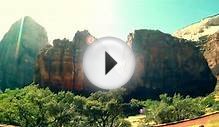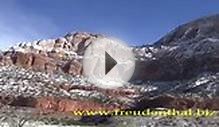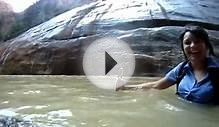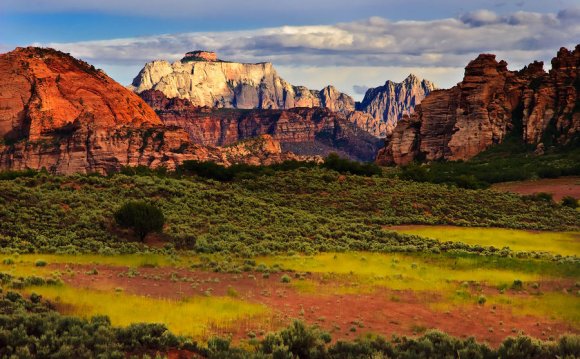
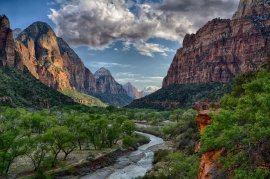 On November 19, 1919, President Woodrow Wilson signed a bill into law establishing Zion National Park. The park encompasses some of the most scenic canyon country in the United States, featuring high plateaus, a maze of sandstone canyons and waterfalls with colorful hanging gardens. Check out these interesting facts about Utah’s first national park as we celebrate the park’s 96th birthday.
On November 19, 1919, President Woodrow Wilson signed a bill into law establishing Zion National Park. The park encompasses some of the most scenic canyon country in the United States, featuring high plateaus, a maze of sandstone canyons and waterfalls with colorful hanging gardens. Check out these interesting facts about Utah’s first national park as we celebrate the park’s 96th birthday.
1. Before it was a national park, Zion was a national monument, and it’s name wasn’t Zion. The park was first protected in 1909 when President William Howard Taft designated Mukuntuweap National Monument using the power of the 1906 Antiquities Act. In the 10 years until it became a national park, it was expanded, and its name was changed to Zion. Today, Zion preserves 229 square miles of red rock landscape that’s so stunning it looks surreal. Photo taken from the Grotto by Tom Morris (www.sharetheexperience.org).
2. Zion is home to one of the greatest engineering feats of modern times. In 1909, Zion was virtually inaccessible to visitors because of poor road conditions and limited railway. Once Zion became a national park, people wanted to explore it. To make this possible, construction began on a 25-mile stretch of road to connect Zion to the Grand Canyon and Bryce Canyon. Completed in 1930, the Zion-Mt. Carmel Highway and Tunnel is a must see.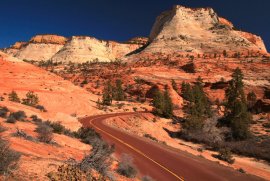 The 1.1-mile-long tunnel cuts through the vertical sandstone cliffs of Zion, blends in with the surrounding landscape and includes windows to provide views of Zion Canyon. When the tunnel opens up, drivers are left in awe of the spectacular beauty. Photo of the Zion-Mt. Carmel Highway by Adam Jewell (www.sharetheexperience.org).
The 1.1-mile-long tunnel cuts through the vertical sandstone cliffs of Zion, blends in with the surrounding landscape and includes windows to provide views of Zion Canyon. When the tunnel opens up, drivers are left in awe of the spectacular beauty. Photo of the Zion-Mt. Carmel Highway by Adam Jewell (www.sharetheexperience.org).
3. Zion is more than just slot canyons and amazing hikes - it also protects archeological sites. People have called the canyons and plateaus of Zion National Park home for over 10, 000 years. The remnants of their time here exist throughout the park. From humble granaries to improbable highways, these structures stand as testaments to the ingenuity of those that came before us. Photo by National Park Service.
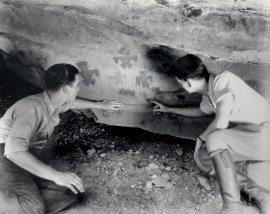
4. Zion’s Angels Landing provides spectacular views, but it’s one of the world’s most dangerous. Towering over and jutting into the canyon, Angels Landing stands 1, 488 feet above the Virgin River at its base. The 2.2-mile hike might seem tame, but it includes many switchbacks over sand and slickrock, long drop-offs and exposed edges. Many outdoor publications have listed Angels Landing as one of the most dangerous hikes in the world. But if you come prepared and hike safely, you’ll be rewarded with a view that is out of this world. Photo from Angels Landing by John Cade (www.sharetheexperience.org).
5. Zion Canyon is continually changing. The Virgin River and its tributaries run through Zion, carving and shaping the canyon. On average, the Virgin River removes 1 million tons of sediment, which mostly occurs during flash floods. The result: The canyon continues to widen and the river channel continues to deepen. Photo of The Narrows by Kevin Roland (www.sharetheexperience.org).
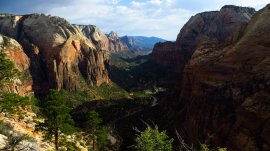
6. Zion is a climber’s paradise. Zion National Park's 2, 000-foot sandstone cliffs are world renowned for their big wall climbs. The best conditions for climbing are from March through May and September through early November. Photo of rock climbers exploring Zion's vertical world by National Park Service.
7. The park has a Subway, but it’s not a form of public transportation. The journey through Zion's The Subway is like no other. Without any trails, hiking The Subway requires route finding, rappelling and even swimming. To explore the Subway, visitors must get permits, and it is subjected to daily limits. Photo of The Subway by Jeremy Stevens (www.sharetheexperience.org).
8. Zion has one of the largest freestanding arches in the world. While Zion isn’t known for its natural stone arches, there are a few to be found in the park (and one that’s pretty darn massive). Located deep in the backcountry of Zion National Park’s Kolob Canyons District, and hidden in a small side canyon, sits Kolob Arch, perched high on the canyon wall with a majestic curve like a giant condor’s wing. Kolob Arch is one of the world’s largest arches at a little over 287 feet long - second only to Landscape Arch at Arches National Park. Photo of Kolob Arch by National Park Service.
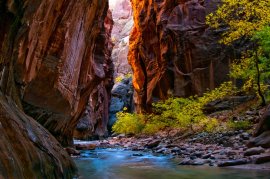
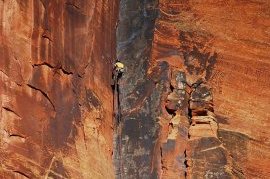
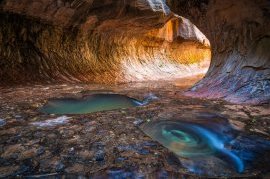

RELATED VIDEO
